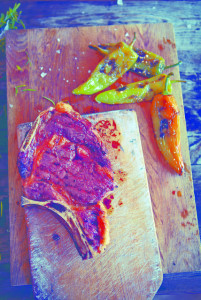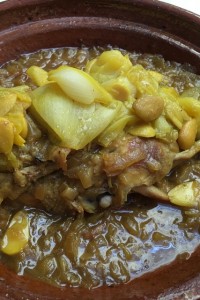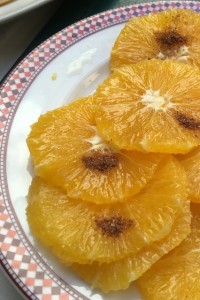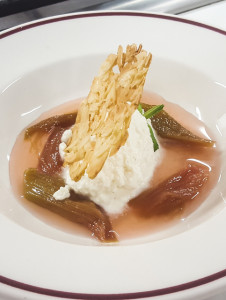Things are really hotting up here at Litfest HQ, plans are romping ahead and bookings are pouring in for events at this years Kerrygold Ballymaloe Literary Festival of Food and Wine which Condé Nast Traveller has described as one of the top 10 ‘Best Festivals in the World’.
In just four years this festival which Rory O’ Connell and Rebecca Cronin have skilfully and brilliantly curated has attracted participants and food lovers not just from these islands but from all over the world to come to Ireland to meet and watch their favourite cooks, chefs and food writers. Others are packing their bags to come to see their icons from the food and beverage world.
We’ve gathered together a dynamic pool of writers, chefs, cooks, foragers, many whom, we would never have the opportunity to see or hear unless we travelled thousands of miles to deepest Mexico to meet Eric Warner and Mya Henry from Hartwood to Argentina to meet a powerhouse like Frances Mallman – ‘King of Fire’ who is featured in the Netflix documentary The Chef’s Table.
For those who may not have been here before the events take place at Ballymaloe House, Ballymaloe Cookery School, The Grain Store at Ballymaloe, on the farm and in the gardens and of course the huge Fringe Festival and the Drinks Theatre will be rocking along simultaneously in the Big Shed.
In the midst of all the fun this year’s event will focus our minds and thoughts on the questions ‘Our Food – What’s the Story?’
The Grainstore will have a new setup to previous years and will bring a fast-paced, dynamic and enthusiastic edge to the festival. At Litfest16, The Grainstore will be transformed into an exciting auditorium staging a thought-provoking and inspiring series of short talks and presentations, giving us the most up to the minute news of what’s happening in the world of food and drinks.
But this is a cookery column so who are the exciting cooks and chefs giving cookery classes at the Ballymaloe Cookery School in the 2016 Kerrygold Ballymaloe Literary Festival of Food and Wine.
Well, the guys from Hartwood, Yotam Ottolenghi of course but also Ramal Scully of NOPI have chosen some recipes from their new NOPI cookbook. The irrepressible Jeremy Lee from Quo Vadis in London will share some of the dishes that lure people back to his establishment in Soho over and over again. My favourite London baker Claire Ptak from Violet Cakes will be in the Dem Theatre at the Ballymaloe Cookery School on Sunday.
And guess what, the authors of my favourite book of 2015, Bar Tartine Techniques and Recipes, Nicolaus Balla and Cortney Burns will also be here. Those of you enchanted by preserving and fermentation must not miss these two alchemists from Bar Tartine in San Francisco. As ever there is a strong Irish presence and Katie Sanderson of the Dilisk Project in Galway, one of the most exciting new voices in food will give a cookery dem on Sunday.
Fans of Kamal Mouzawak from Beirut and he has many fans in Ireland will want to catch up with him at 3.30 on Sunday in the Blue Dining Room at the BCS.
Now this is just a taste of over 100 events on the weekend of 20-22 May 2016. So check out www.litfest.ie. Some events are already sold out but there are still lots of good things to explore.
Here is a taste of what’s to come.
Ottolenghi’s Green Pancakes with Lime Butter
Serves 3-4
250 g spinach, washed
110 g self-raising flour
1 tablespoon baking powder
1 free range egg
50 g unsalted butter, melted
½ teaspoon salt
1 teaspoon ground cumin
150 ml milk
6 medium spring onions, (110 g in total), finely sliced
2 fresh green chillies, thinly sliced
1 free range egg white
Olive oil for frying
Lime Butter
100 g unsalted butter, softened
Grated zest of 1 lime
1½ tablespoons lime juice
¼ teaspoon salt
¼ teaspoon white pepper
1 tablespoon coriander, chopped
½ garlic clove, finely chopped
¼ teaspoon chilli flakes
First make the lime butter. Put the butter in a medium bowl and beat with a wooden spoon until it turns soft and creamy. Stir in the rest of the ingredients. Tip onto a sheet of cling film and roll into a sausage shape. Twist the ends of the film to seal the flavoured butter. Chill until firm.
Wilt the spinach in a pan with a splash of water. Drain in a sieve and when cool, squeeze hard with your hands to remove as much moisture as possible. Roughly chop and put aside.
For the pancake batter, put the flour, baking powder, whole egg, melted butter, salt,cumin and milk in a large mixing bowl and whisk until smooth. Add the spring onions, chillies and spinach and mix with a fork. Whisk the egg white to soft peaks and gently fold it into the batter.
Pour a small amount of olive oil into a frying pay and place on a medium heat. For each pancake, ladle 2 tablespoons of batter into the pan and press down gently. You should get smallish pancakes, about 7cm in diameter and 1 cm thick. Cook for about 2 minutes on each side, or until you get a good golden green colour. Transfer to kitchen paper and keep warm. Continue making pancakes, adding oil to the pan as needed until the batter is used up.
To serve, pile up three warm pancakes per person and place a slice of flavoured butter on top to melt.
NOPI’s Red Quinoa and Watercress Salad
If you can’t find red quinoa, the more widely available white quinoa can be used in this recipe. It will need a couple of minutes less cooking time than the red.
Serves 4
5 small shallots, sliced into pinwheels, 1 cm thick
½ teaspoon caster sugar
1 tablespoon sumac
3 tablespoons red wine vinegar
200 g red quinoa, rinsed
2 tablespoons lemon juice
1 tablespoon Dijon mustard
2 tablespoons olive oil
150 g young watercress leaves, tough stalks removed
Coarse sea salt and black pepper
Place the shallots in a small bowl with 1 teaspoon of salt. Mix well and set aside for 5 minutes before adding the sugar, sumac and vinegar. Mix again and set aside for another 30 minutes.
Bring a small pan of water to the boil and add the quinoa. Return to the boil and then cook for 11 minutes. Drain, refresh well under cold water and then set aside until completely dry.
To make the dressing, place the lemon juice and mustard in a bowl with 1 teaspoon of salt and a good grind of black pepper. Mix continuously as you slowly add the olive oil.
Strain the shallots and put them into a large mixing bowl, along with 1 tablespoon of the pickling liquid. Add the quinoa and watercress, pour over the dressing. Combine everything gently and serve.
Hartwood’s Grapefruit, Mezcal and Burnt Honey Cake
Serves 8-10
For the Cake
3½ cups plain flour
¼ cup ground cinnamon
1 teaspoon baking powder
Pinch of salt
2 sticks unsalted butter, softened
1 cup sugar
3 large eggs
1 tablespoon vanilla extract
1½ cups of plain whole milk yoghurt
¼ cup sweetened condensed milk
1 cup dark honey
2 grapefruit, zest, segmented and juice
For the Caramel
1 cup water
½ cup sugar
¼ cup grapefruit juice
2 tablespoons mezcal
¼ cup dark honey
1 tablespoon grated grapefruit zest
2 tablespoons unsalted butter
Icing sugar, for dusting
Preheat the oven to 180°C/350°F/gas mark 4. Butter a 9 inch (23 cm) round cake pan. Line with baking parchment and butter the parchment.
Whisk together the flour, cinnamon, baking powder and salt in a medium bowl.
Next zest the grapefruit and segment the fruit. First, slice off the top and bottom of the grapefruit so that you can see two tiny circles of flesh. Slice off the skin, pith and outer membrane. Trim off any white patches left after you cut off all the peel. Holding the fruit in one hand and a sharp knife in the other, working over a small bowl, slice as close as possible to the membranes that separate the sections. Slice along one, then the other and flick the loosened segment into the bowl. When the entire fruit is segmented, squeeze the juice from the remaining membranes with your hand and reserve.
Cream the butter and sugar in a large bowl until light and fluffy. Add the eggs one at a time mixing well after each addition. Add the vanilla extract and mix to combine. Add the yoghurt, sweetened condensed milk and ¾ cup of honey. Mix the dry ingredients into the wet ingredients, being careful not to over mix.
Arrange the grapefruit segments in concentric rings in the bottom of the cake pan. Pour the remaining ¼ cup of honey over the grapefruit. Pour the batter into the pan. Bake for 45 minutes, or until a cake tester inserted into the centre comes out clean. Transfer the pan to a rack and let cool.
Next make the caramel. Combine the water and sugar in a medium saucepan, bring to a simmer and simmer until the sugar melts and the caramel turns a dark amber colour. (be careful at the end – it can burn quickly). Add the reserved grapefruit juice, the caramel will bubble up and swirl to incorporate, then add the mescal and continue swirling until the caramel returns to an amber colour. Add the honey, grapefruit zest and butter, swirl to incorporate, then take off the heat.
To serve, turn the cake out on a cooling rack and remove the paper. Transfer to a serving plate and pour over the warm caramel. Dust with icing sugar.
Note: Mezcal is a distilled spirit made from the Maguey plant native to Mexico. Tequila can be used as a substitute.
Hot Tips
Homemade Butter and Yoghurt
Wouldn’t you love to be able to make your own butter. We will teach you how and also make yoghurt, cottage cheese, labneh, paneer and a simple farmhouse cheese on Wednesday morning, May 5th at the Ballymaloe Cookery School. Students who would like to learn how to milk a cow can join us at 8.30am when we milk our Jersey cows and separate the milk and cream in our micro dairy www.cookingisfun.ie for more info.
Slow Food East Cork Event
Hear the story of Irish tortillas. Blanco Nino is based in Clonmel, Co Tipperary producing all natural, authentic, naturally gluten free and all round awesome corn tortillas and tortilla chips. Philip Martin works with great, passionate and sustainability-focused farmers growing non-GM corn and he will be at the Cookery School on Thursday May 5th to tell us his story. www.slowfoodireland.com for more information.
Have you ever tasted Dexter beef?
Slow Food North West
Slow Food North West will host a Dexter beef spring barbecue and beer tasting on Sunday May 8th in Hamilton Castle, Manorhamilton, Co. Leitrim from 1pm. Meet the charcoal maker, the farmer and the master brewer. Tel 083 486 9467 or www.slowfoodnorthwest.com for the details.








